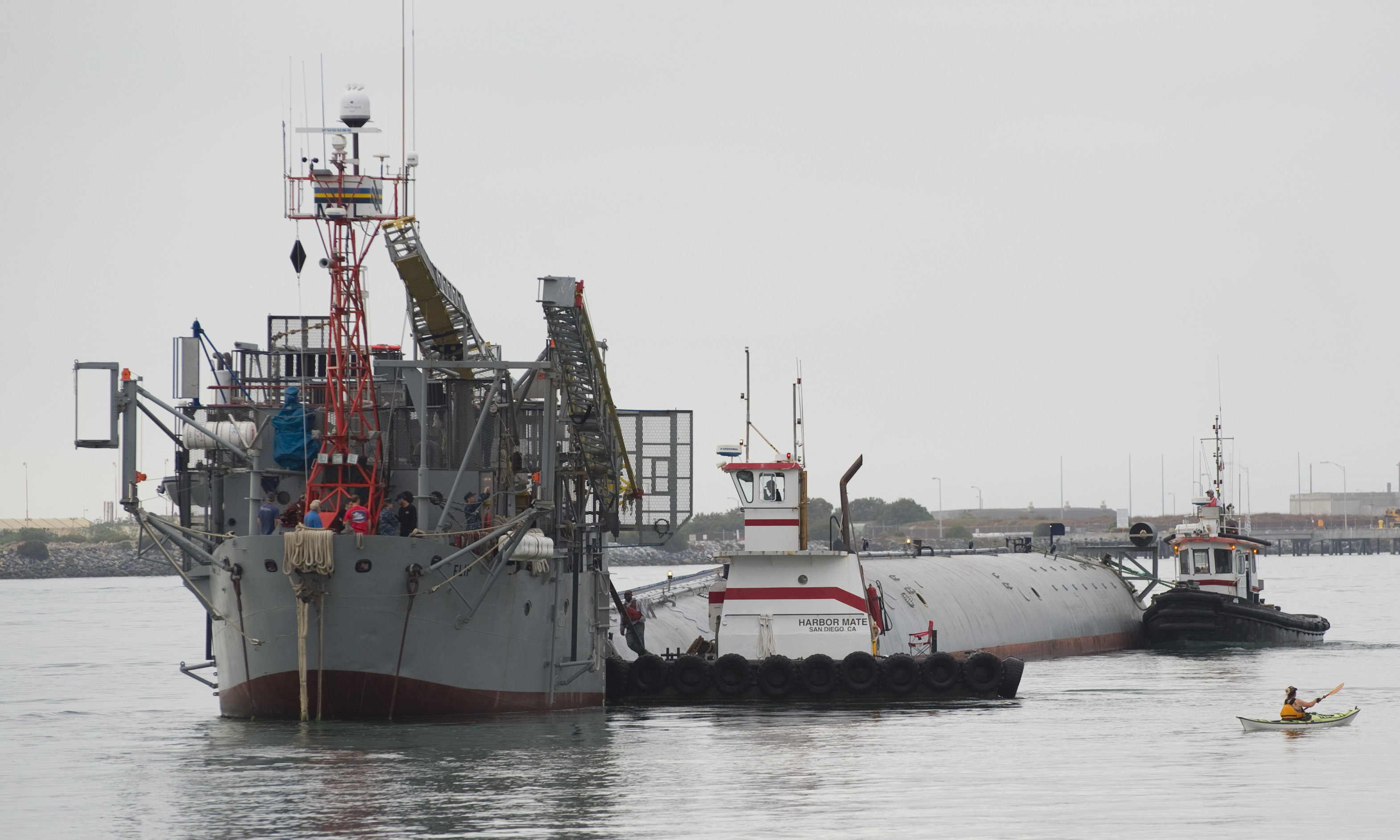RP FLIP on:
[Wikipedia]
[Google]
[Amazon]
R/P ''FLIP'' (''floating instrument platform'') is an open ocean research platform owned by the U.S.
 The Marine Physical Laboratory of
The Marine Physical Laboratory of
File:FLIP turns 50.ogv, Video of ''FLIP'' flipping
File:RP FLIP at research location (120630-N-PO203-310).jpg, ''FLIP'' vertical in 2012
File:RP FLIP towed to sea (120630-N-PO203-076).jpg, ''FLIP'' under tow in 2012
File:RP FLIP external platforms in horizontal position (120630-N-PO203-396).jpg, ''FLIP'' in horizontal position, showing rails for vertical position
R/P ''FLIP'' homepage
"FLIP - Research Vessel"
on Ship-Technology.com
"The Boat Designed to Capsize"
on ''Damn Interesting'' ;Media * * {{DEFAULTSORT:Flip, RP Research vessels of the United States Scripps Institution of Oceanography University-National Oceanographic Laboratory System research vessels 1962 ships Ships built in Portland, Oregon
Office of Naval Research
The Office of Naval Research (ONR) is an organization within the United States Department of the Navy responsible for the science and technology programs of the U.S. Navy and Marine Corps. Established by Congress in 1946, its mission is to plan ...
(ONR) and operated by Scripps Institution of Oceanography
The Scripps Institution of Oceanography (sometimes referred to as SIO, Scripps Oceanography, or Scripps) in San Diego, California, US founded in 1903, is one of the oldest and largest centers for oceanography, ocean and Earth science research ...
. The platform is long and is designed to partially flood and pitch backward 90°, resulting in only the front of the platform pointing up out of the water, with bulkheads becoming decks. When flipped, most of the ballast for the platform is provided by water at depths below the influence of surface waves, hence ''FLIP'' is stable and mostly immune to wave action similar to a spar buoy. At the end of a mission, compressed air
Compressed air is air kept under a pressure that is greater than atmospheric pressure. Compressed air is an important medium for transfer of energy in industrial processes, and is used for power tools such as air hammers, drills, wrenches, and o ...
is pumped into the ballast tank
A ballast tank is a compartment within a boat, ship or other floating structure that holds water, which is used as ballast to provide hydrostatic stability for a vessel, to reduce or control buoyancy, as in a submarine, to correct trim or list, ...
s in the flooded section and the platform, which has no propulsion, returns to its horizontal position so it can be towed to a new location. The platform is frequently mistaken for a capsized ocean transport ship.
History
 The Marine Physical Laboratory of
The Marine Physical Laboratory of Scripps Institution of Oceanography
The Scripps Institution of Oceanography (sometimes referred to as SIO, Scripps Oceanography, or Scripps) in San Diego, California, US founded in 1903, is one of the oldest and largest centers for oceanography, ocean and Earth science research ...
created ''FLIP'' with funding from the Office of Naval Research
The Office of Naval Research (ONR) is an organization within the United States Department of the Navy responsible for the science and technology programs of the U.S. Navy and Marine Corps. Established by Congress in 1946, its mission is to plan ...
and the assistance of the commercial naval architecture firm The Glosten Associates. ''FLIP'' was originally built to support research into the fine-scale phase and amplitude fluctuations in undersea sound waves caused by thermal gradients and sloping ocean bottoms. This acoustic research was conducted as a portion of the Navy's SUBROC program. Development started in January 1960 after a conversation between MPL researcher Frederick H. Fisher and MPL Director Fred N. Spiess regarding stability problems that Fisher was encountering when using the submarine as a research platform. Spiess recalled a suggestion from Allyn Vine that upending a ship might make it more stable, based on Vine's observation of a Navy mop floating in waves. Fisher was subsequently assigned to work on the feasibility and later development of such a vessel. The Gunderson Brothers Engineering Company in Portland, Oregon, launched ''FLIP'' on 22 June 1962.
Capabilities
''FLIP'' is designed to study wave height, acoustic signals, water temperature and density, and for the collection ofmeteorological
Meteorology is a branch of the atmospheric sciences (which include atmospheric chemistry and physics) with a major focus on weather forecasting. The study of meteorology dates back millennia, though significant progress in meteorology did not ...
data. Because of the potential interference with the acoustic instruments, ''FLIP'' has no means of propulsion. It must be towed to open water, where it drifts freely or is anchored.
''FLIP'' is 700 gross tons. It carries a crew of five, plus up to eleven scientists. It is capable of operating independently during month-long missions without resupply. It can be operated around the world, although it normally operates off the west coast of the United States from a home base at Scripps' Nimitz Marine Facility in San Diego, California. The ship has specially designed interiors: some fixtures, such as the toilet seats, can flip 90°, and the shower heads are curved 90°. There are overhead lights on the surfaces that are the ceilings in both the towing (horizontal) and flipped orientations.
Gallery
References
External links
R/P ''FLIP'' homepage
"FLIP - Research Vessel"
on Ship-Technology.com
"The Boat Designed to Capsize"
on ''Damn Interesting'' ;Media * * {{DEFAULTSORT:Flip, RP Research vessels of the United States Scripps Institution of Oceanography University-National Oceanographic Laboratory System research vessels 1962 ships Ships built in Portland, Oregon